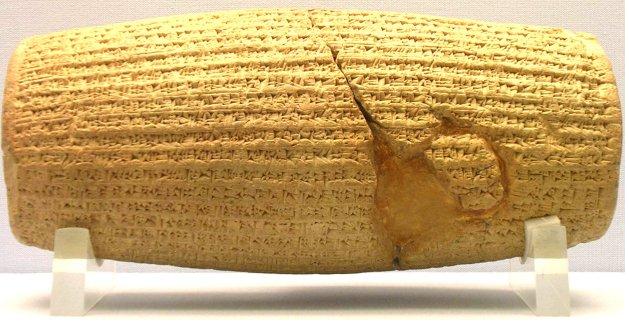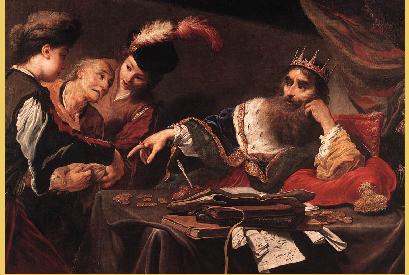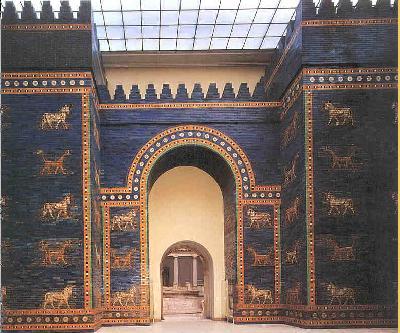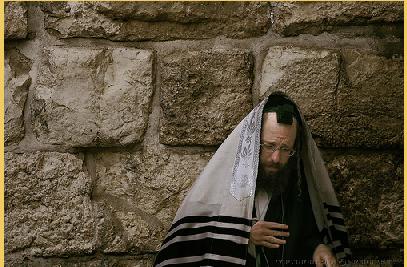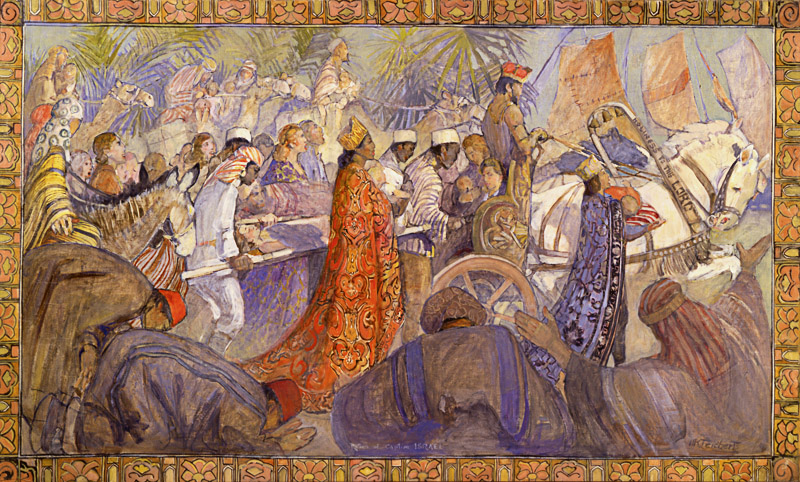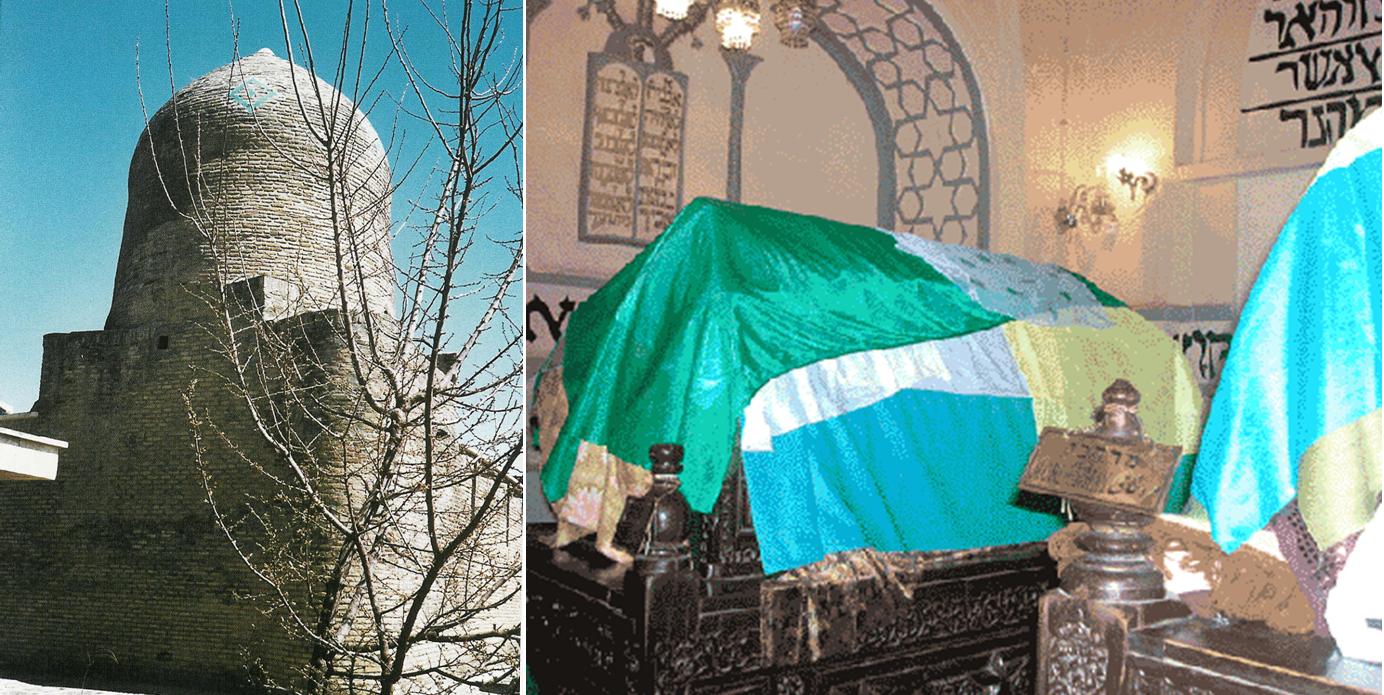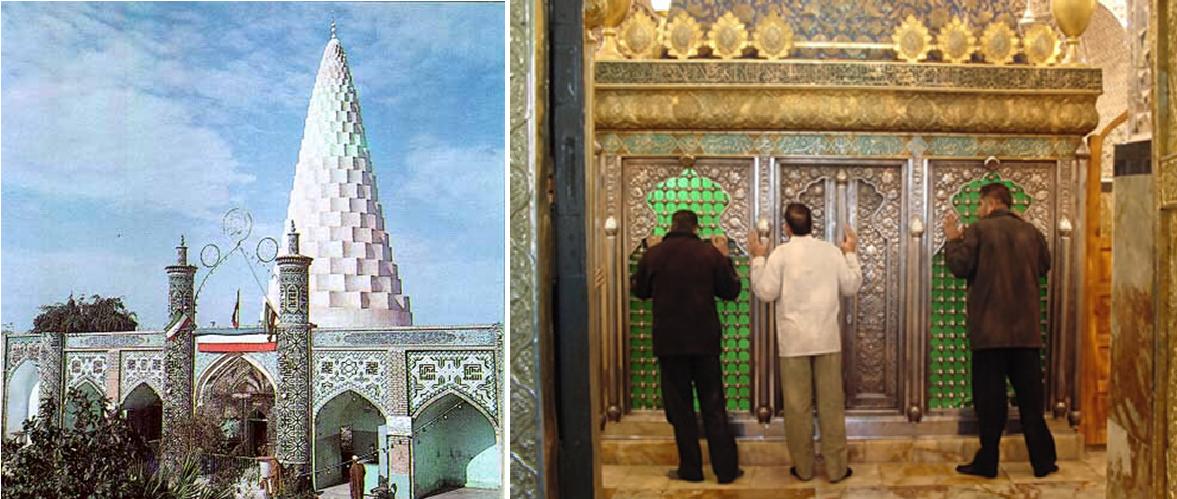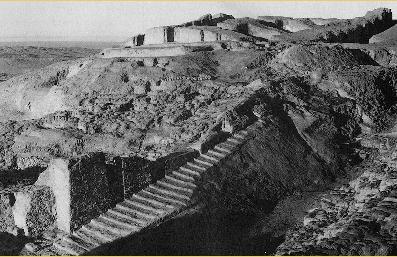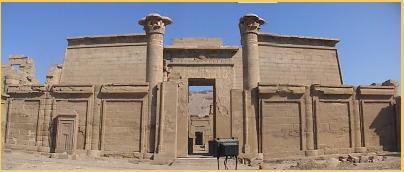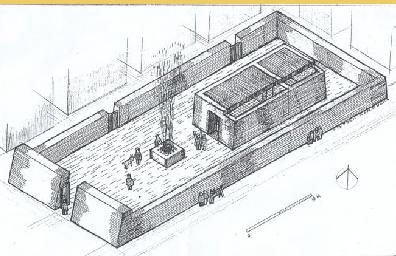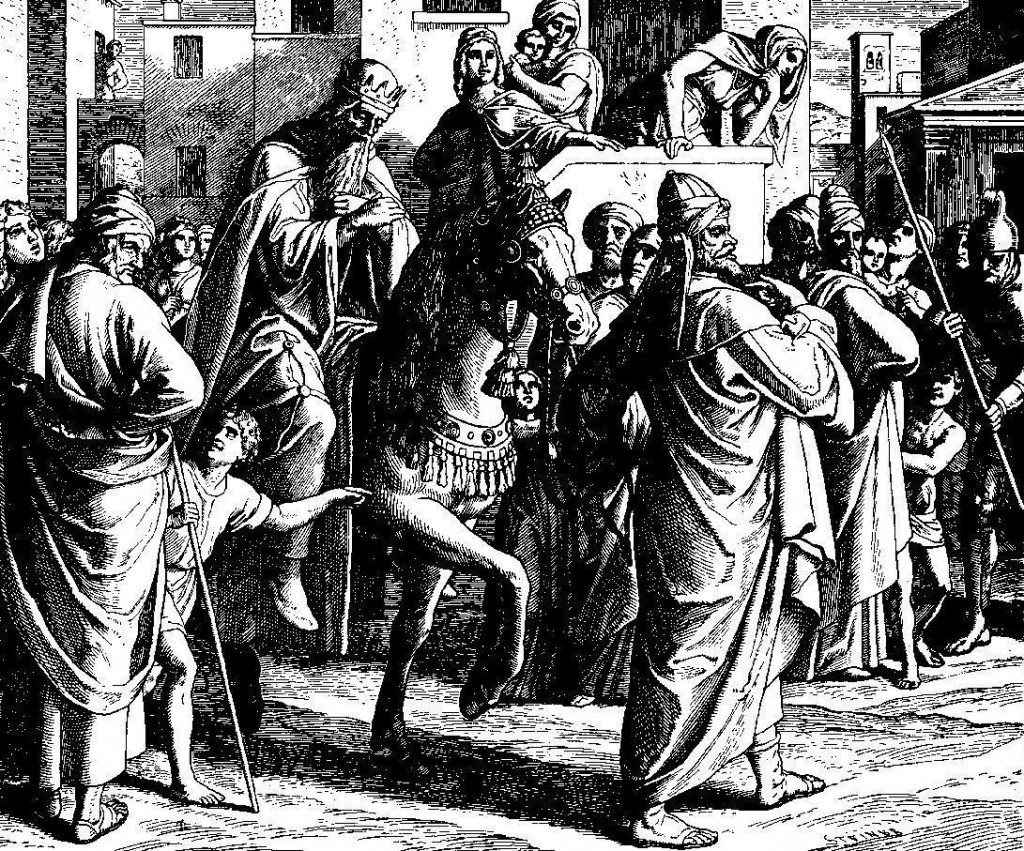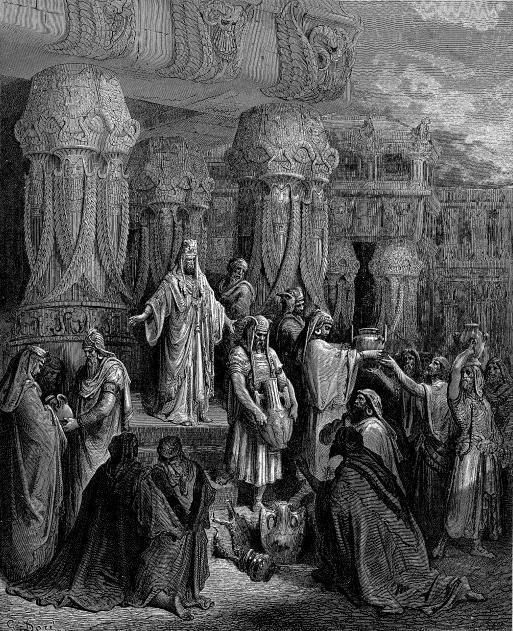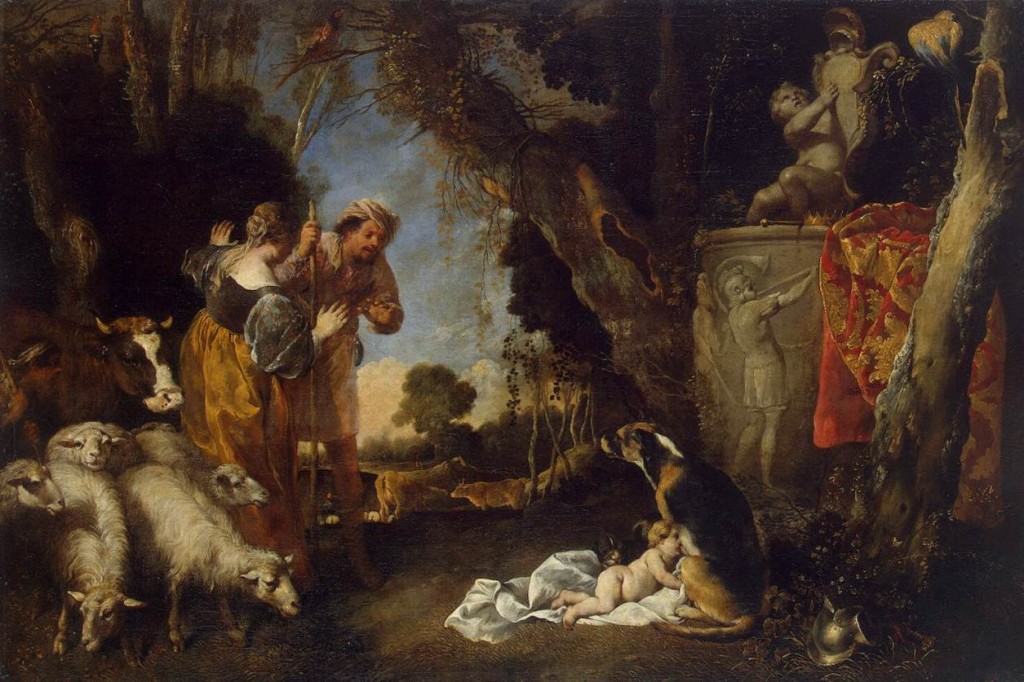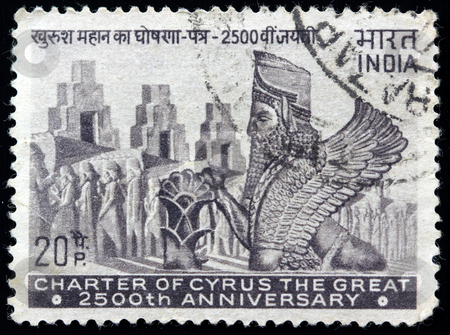Cyrus the Great (c. 600 BC or 576 BC–530 BC) entered Babylon-city in peace on October 29, 543 BC. This day is also associated with Cyrus the Great’s illuminated policies with respect to the Human Rights (religious, cultural, lingusitic) and economic welfare of all citizens. Cyrus’ vision and policies have left a profound legacy on world history.
Below is an audio interview in Persian with Kaveh Farrokh with respect to Cyrus the Great and his legacy:
Persian Readers may be interested in Amordad’s -روند سیاسی دموکراتیک در نخستین سامانه آموزش پرورش همگانی-
Note the below video as well:
The article below encapsulates the policies of Cyrus and his successors and the legacy these have left upon the Greeks, Romans and Europeans.
===========================================================================
The Cyrus Cylinder now housed in The British Museum. The policies advocated by Cyrus in this Cylinder are corroborated by independent Greek and Biblical sources as well as by a number of other archaeological findings in Mesopotamia (modern Iraq), Egypt and western Anatolia (in Modern Turkey).
Lydia
King Croesus of Lydia (reigned 560 to 546 BC) had invaded Cappadocia in 547 BC in an attempt to outflank the newly established Achamenid state of Cyrus (Herodotus, I, 76-77). Cyrus defeated Croesus and captured the Lydian capital, Sardis.
King Croesus himself was neither executed nor mistreated in the slightest. In fact, Cyrus treated him with honor and granted him a high position in his court: Croesus accompanied Cyrus back to Ecbatana where he was accorded the highest respect. The fact that Cyrus spared Croesus is attested to by Greek sources (i.e. Herodotus, 1:151-153) as well as established historians such as I.M. Diakonoff (Media, in The Cambridge History of Iran Vol. 2, pp. 36-88, 1985), M. Mallowan (Cyrus the Great, in The Cambridge History of Iran Vol. 2, pp.392-419, 1985) and J. Cargill (The Nabonidus Chronicle and the Fall of Lydia, in American Journal of Ancient History, 2. pp. 97-116, 1977).
European depiction of King Croesus receiving tribute from a Lydian peasant. Despite being defeated by Cyrus in battle, he was accorded a status equal to the Achaemenid royalty. Croesus accompanied Cyrus back to Ecbatana as a member of the royal Achaemenid entourage.
Babylon and Mesopotamia
Another example is Cyrus’ entrance into Babylon-city. Morale in Babylon had plummeted mainly due to the neglect of the god Marduk by King Nabonidus (consult Yamauchi’s article “Nabonidus”, pp.1170-1171 in the Wycliffe Bible Encyclopedia, edited by C.F. Pfeiffer, Chicago, 1970).
The high level of disaffection against Nabonidus resulted in the defection of an important portion of the Babylonians to Cyrus. The leader of the pro-Cyrus Babylonians was Gubaru (Ugbaru) the disaffected Babylonian governor of Gutium who had served with the late King Nebuchadnezzar II (530-652 BC).
The main battle was against the Median wall which spanned 48-50 kilometers with Opis on the Tigris River to Sippar on the Euphrates River. The main battle was fought at Opis (September, specific date unknown, 543 BC) with Cyrus being supported by Gubaru (consult A.R. Burn, Persia and the Greeks: The Defense of the West. New York: St. Martin’s Press, 1962, p.54-56). More will be said on the Opis battle and the narration of this event in the Nabonidus Chronicle in
More importantly, the city of Babylon also fell on October 12, 543 BC without recourse to combat. The Nabonidus Chronicle clearly states that Gubaru and his troops then entered Babylon-city “without a battle” (Yamauchi, 1997, p.86).
It is important to state this very clearly: Cyrus entered Babylon-city on October 29, 543 BC, a full 17 days after the arrival of Gubaru to that locale. When Cyrus entered Babylon-city, the inhabitants welcomed Cyrus as a liberator and not some crude conqueror.
Cyrus’ arrival occurred just as the inhabitants of Babylon were engaged in celebrations and festivals, as corroborated by Greek sources (Herodotus, I, 19; Xenophon, Cyropaedia, 7. 5.15). The Nabonidus Chronicle also states that “Cyrus entered Babylon…the state of peace was imposed on all the city, Cyrus sent greetings to all Babylon” (Nabonidus Chronicle, III, 12-22; see ANET(Ancient Near Eastern Texts relating to the Old Testament), Pritchard, 1955, p.306). The inhabitants of Babylon-city are recorded as having laid branches before Cyrus as he entered through the city gates:
“On the third day of the month of Arahshamnu, Cyrus marched into Babylon, and they laid down green branches in front of him …Cyrus then sent his best wishes to the residents living there. His governor, Gubaru, then installed leaders to govern over all Babylon.”[Consult Professor M.M. Annan’s “The Prophecy of Daniel”; citation from Babylonian Chronicles}
The Ishtar Gate, now housed in the Berlin Museum. When Cyrus entered Babylon-city through the Ishtar gates, the city’s inhabitants laid branches in his path. As noted by Graf, Hirsch, Gleason, and Krefter: “Cyrus proved a tolerant conqueror: when he enteredBabylon…he ordered his troops to show respect for the city’s temples and religious customs.” [D.F. Graf, S.W. Hirsch, K. Gleason, and F.H. Krefter, A Soaring Spirit. New York:Time-Life Books, 1988, p.15]
The liberation of the Jews
One of the most interesting aspects of the Biblical sources (especially Isaiah) is that they corroborate the policies of the Cyrus Cylinder, especially with respect to the liberation of oppressed peoples such as the Jews.
To summarize, Babylonian King Nebuchadnezzar II had sacked the Temple of Jerusalem in 597 BC and 586 BC. It was in the second attack that Nebuchadnezzar II exiled the Jews to the Babylonian Captivity. The quote we will display comes from the 2nd Isaiah (also known as the Deutero-Isaiah). This is also the name given to chapters 40-55 of the book of Isaiah. Below are a few quotes:
‘I am the Lord, who makes all things, Who stretches out the heavens all alone, Who spreads abroad the earth by Myself; (44.25)…Who says of Cyrus, “He is My shepherd, And he shall perform all My pleasure, saying to Jerusalem, ‘You shall be built,’ and to the temple, ‘Your foundation shall be laid…(45.1) Thus says the Lord to His anointed [Messiah] to Cyrus -whose right hand I have held…(45.2)…For Jacob My servant’s sake, and Israel My elect, I have even called you by your name; I have named you, though you have not known Me.
It is clear from the 2nd Isaiah that the Jews did not record Cyrus as one who “staged several salutatory atrocities when he invaded”. Instead, he is cited as “My shepherd” and “His anointed”.
The West Wall in Jerusalem. After his conquest of Babylon, Cyrus allowed the Jewish captives to return to Israel and rebuild the Hebrew temple. It is believed that approximately 40,000 did permanently return to Israel.
Darius also continued the process of transferring back to the Jews all those holy utensils that had been captured by Babylon:
And also let the golden and silver vessels of the house of God, which Nebuchadnezzar took forth out of the Temple which is at Jerusalem, and brought unto Babylon, be restored, and brought again unto the Temple which is at Jerusalem, every one to his place, and place them in the house of God.” (Ezra VI:3-5)
Artaxerxes I (Old Persian: Artakhshathra) who became king in 464 BC continued Cyrus’ policy of favoring the Jews by his continued support for the rebuilding of the Jerusalem Temple. Artaxerxes’ name is recalled with honor in the Jewish holy texts of Nehemiah and Ezra due to his support of Judaism. Greco-Roman sources, notably Plutarch in Artaxerxes has described the king as being “a gentle and noble spirit”.
It is here where one sees how historical links and the sense of justice overrule contemporary political issues. Note the photograph below:
When History goes beyond Politics: Koresh or Cyrus street in Jerusalem. There is currently no street named Cyrus or Koroush in Tehran, the capital of Iran today. There is also an “Iran” street in Israel.
-نقاشی کوروش بزرگ که در آن یهودیان در حال تکریم او هستند از نقاش معاصر آمریکایی- Painting by a contemporary American artist Minerva Teichert showing the Jews celebrating the arrival of Cyrus who liberates them for the return to Jerusalem.
In like manner, many Westerners would be surprised to see the images shown below.
The tomb of Esther and Mordechai in Hamedan, northwest Iran. External view (left) and the interior of the tomb (right).
The tomb of Daniel in Khuzestan in southwest Iran. The main structure (note cone-like dome) as it stands today (left) and Iranian pilgrims paying homage within the tomb of Daniel.
Temples in Mesopotamia and Egypt
After the completion of his conquests, Cyrus took great care to attend to the needs of the local populace. There are records that clearly show that Cyrus ordered the Enunmah Temple at Ur, the Eanna Temple at Uruk, and a host of other temples at Babylon to be repaired.
The remnants of the Eanna temple and ziggurat, Uruk in modern Iraq. The Achaemenids provided consistent support for the repair and reconstruction of the local temples and structures in Mesopotamia during their rule.
During the reign of Cambysis funds were released from the Royal treasury to rebuild the Temple Sais in Egypt (A. Gardner, Egypt of the Pharaohs. London: Oxford University Press, 1961, p.366-367). Darius the Great (549-486 BC) also supported reconstruction projects in Egypt as evidenced by his financial support for the complete reconstruction of the Temple of Amon at Hibis (near the Khargah Oasis) (M.F. Gyles, Pharaonic Policies and Administration 663-323 BC. Chapel Hill, North Carolina: North Carolina Press, 1959, p.70)
The remnants of the Temple of Amon in Egypt. Achaemnid kings such as Cambyses and Darius the Great consistently provided funds and support for the reconstruction and repair of Egypt’s temples.
The Achaemenids also rebuilt the Jewish Temple at Elephantine. A memorandum written by Delailah (the governor of Samarra) and Bagoas (the Iranian governor of Judah) addresses the need to rebuild the Jewish Temple at Elephantine . The document states of the need to:
“”…to build it [the Jewish Temple at Elephantine] on its site as it was before, and the meal-offering and incense to be made on the altar as it used to be”. [Consult ANET (Ancient Near Eastern Texts relating to the Old Testament), Pritchard, 1955, p.492 ]
As noted by Professor Emil Kraeling this passage indicates that this memorandum is:
“…a directive presumably suggesting that the rebuilding be done at government expense”[E. Kraeling, The Brooklyn Aramaic Papyri. New Haven: Yale University Press, 1953, p.107 ]
A reconstruction of the Jewish Temple in Elephantine in Egypt. The Achaemenids subsidized the repair and reconstruction of Jewish temples as a matter of state policy.
In other words, it was a matter of official Achaemenid government policy, as founded by Cyrus, that the empire subsidize the repairs and reconstruction of non-Iranian temples. This memorandum regarding Elephantine was issued after Cyrus the Great had passed away; Egypt was never conquered during Cyrus’ reign, this was done during the reign of his son Cambysis (reigned 530-523 BC).
It is fairly certain among the majority of reputable historians that the Jewish community was able to largely rebuild itself during Achaemenid rule. An excellent reference for this topic is:
Yamauchi, E. M. (2004). The Reconstruction of Jewish Communities during the Persian Empire.The Journal of the Historical Society, 4(1), 1-25.
Western Anatolia
The Achaemenids also supported reconstruction projects in Anatolia, especially in the areas bordering European Greece. Dramatic evidence for this was found by a team of French archaeologists along the ancient Lycian coast in modern southwest Turkey. What is significant about this expedition is the discovery of a decree that was written in 3 languages: Greek, Lycian and Aramaic (the official language of the Achaemenid Empire). The decree is almost identical to the Cyrus Cylinder or cuneiform) – it clearly respects the rights of the local populace and endeavors to support their material needs. Note that this is dated to 358 BC, just two decades before the invasions of Alexander the Great, a clear indication that Cyrus’ original policies were practiced to the final days of the empire.
For more information on the discoveries of the French archaeological team, please consult the following sources:
Bryce, T.R. (1978). A recently discovered cult in Lycia. Journal of Religious History, 10, 115-127.
Metzger, H. (1979). Fouilles de Xanthos VI: Le Stelle Bilingue de Letoon. Paris: Klincksieck.
Teixidor, J. (1978). The Aramaic text in the trilingual stele from Xanthus. Journal of Near Eastern Studies, 37, 181-186.
Biblical References
Nebuchadnezzar II had destroyed the Jerusalem Temple by razing it to the ground. The treasures of the temple, many of these being holy items, were simply robbed and hauled off as loot to Babylon (i.e. Isaiah 64:11). Cyrus not only liberated the Jews from their captivity in Babylon but also permitted them to return home and to rebuild their destroyed temple in Jerusalem. The following quotes are from the Book of Ezra; these discuss the decree that Cyrus gave on behalf of the Jews to rebuild their temple:
(1.1) In the first year of Cyrus king of Persia, in order to fulfill the word of the Lord spoken by Jeremiah, the Lord moved the heart of Cyrus king of Persia to make a proclamation throughout his realm and put it in writing:
(1.2) ‘This is what Cyrus king of Persia says: The Lord, the God of Heaven, has given me all the kingdoms of the earth and has appointed me to build a temple for him at Jerusalem in Judah. (1.3) Anyone of his people among you – may his God be with him, and let him go up to Jerusalem in Judah and build the temple of the Lord, the God of Israel, the God who is in Jerusalem. (1.4) … provide them with silver and gold, with goods and livestock, and with freewill offerings for the temple of God in Jerusalem.’
Ezra’s uncle Mordechai was highly honored by the Achaemenids. Both Ezra and Mordechai are buried in the Tomb of Esther in modern-day Hamedan (ancient Ecbatana) in northwest Iran.
Cyrus also ordered that the sacred objects taken from the Jerusalem Temple to be given back to the Jews:
(1.5) Then the family heads of Judah and Benjamin, and the priests and Levites -everyone whose heart God had moved- prepared to go up and build the house of the Lord in Jerusalem. … (1.7) Moreover, king Cyrus brought out the articles belonging to the temple of the Lord, which Nebuchadnezzar had carried away from Jerusalem and had placed in the temple of his god [i.e., Marduk]. (1.8) Cyrus king of Persia had them brought by Mithradates the treasurer, who counted them out to Sheshbazzar the prince of Judah.
Gustave Dore’s painting of Cyrus the Great restoring the sacred vessels of the temple to the Jews (Posted in the KingFoska Files website). When Cyrus conquered Babylon, he ordered the sacred religious objects of the Jerusalem Temple to be restored to their rightful owners, the Jews.
If human rights, entails respect for the customs and religions of all creeds and races, then Cyrus has, according to the primary sources, fulfilled this role. According to the Bible, Cyrus not only allowed the Jews to return home and to rebuild their temple, but also ensured that provisions and financial support would be provided in this endeavor.
But there is another point that may be made, namely the opinions of modern-day Jews with respect to Cyrus, whom they cite as “Koresh” in their Bible. While my “survey” is far from scientific, every single Jew whom I have had the pleasure of meeting since childhood, has noted to me thatCyrus is held in very high regard among ordinary Jews and in the Synagogues. These same friends have assured me that this historical view of Cyrus has been in place for close to 2000 years.
Greek sources and the legacy of the Cyropaedia in the Western World
The Greeks, including Alexander (356-323 BC), were very favorable in their citations of Cyrus the Great. The Greeks in fact had written a virtual compendium of Cyrus entitled the Cyropedia of Xenophon.

Xenophon (431-355 BC) wrote a compendium of Cyrus, known as the Cyropedia. The Cyropaedia has been consulted as a standard reference of just statesmanship by a number of prominent western leaders in history.
One interesting quote can be found with respect to a conversation between Cyrus and Croesus as cited by Xenophon:
“… some they weary themselves with counting, measuring, weighing, airing, and watching; and though they have so much at home, they never eat more than they can hold, for they would burst if they did, and they never wear more than they can carry, for they would be suffocated if they did; they only find their superfluous treasure a burden.” (Xenophon, Cyropaedia 8.2.20-21)
The cited example from the Cyropaedia reports on Cyrus’ wisdom regarding the futility of hoarding too much wealth. Croesus however, is well known for having had a fondness for excessive riches.
One of ancient Iran’s most fierce opponents, Alexander (356-323 BC) who conquered the Achaemenid Empire, held the highest respect for Cyrus the Great. When Alexander reached the tomb of Cyrus at Pasargardae, he paid his respects and ordered the tomb to be repaired and restored (i.e. Arrian, XXIX, 1-11; Quintus Curtius, VII, 6.20).

One of the greatest admirers of Cyrus the Great was no other than Alexander (356-323 BC) who conquered Achaemenid Iran. He repaired the Tomb of Cyrus and also spared the frontier post of Kurtakh (known to the Greeks as Cyropolis) as this had originally been founded by Cyrus (Quintus Curtius, VII, 6.20).

Alexander paid his respects to Cyrus the Great at Pasargardae, which is now a UNESCO world heritage site. Despite being at war with the Achaemenids, the Greeks openly praised Cyrus the Great as a just and benevolent ruler.
Cyrus and the Romans
The Cyropaedia has endured the test of time and is with us to this day. It was certainly known to the Romans who respected it.
One example is Scipio Africanus (236-183 BC) who always had a copy of the Cyropedia (consult the introduction of Cawkwell, G. L., The Persian Expedition, Penguin Classics, 1972).

Scipio Publius Cornelius Africanus Major was a major Roman statesman as a well as a General during Rome’s Punic wars. He regularly read the Cyropaedia.
History’s most famous Roman, Julius Caesar (100-44 BC), also consulted the Cyropaedia.

Julius Caesar whose legacy endures in the western world to this day had studied the Cyropaedia.
Western Thinkers and Statesmen
There are also a number of prominent post-Roman European thinkers who consulted the Cyropaedia. One example is the empiricist British philosopher John Locke (1632-1704).

John Locke (1632-1704) is one of the foremost leading thinkers of the enlightenment and one of the proponents of liberal thinking in the western world. He was fully cognizant of the Cyropaedia, which may explain the parallels between his philosophies and elements of Zoroastrian thought followed by Cyrus the Great.
Cyrus is also favorably depicted in European culure and arts. Note the below 18th century Italian painting, now housed at the Hermitage Museum in St. Petersburg.
[Click to enlarge] Childhood of King Cyrus. Oil on canvas (75 x 110 cm) MilanoVASSALLO, Antonio Mariab (1620-1664/72), now housed in the Hermitage Museum in St. Petersburg (read more here…)
But perhaps even more interesting is the fact that the Cyropaedia was known to and referenced by the founding fathers of the United States. One example of this is President Thomas Jefferson (1743-1826) who possessed 2 copies of the Cyropaedia.

President Thomas Jefferson of the United States of America. Like many of the founding fathers and those who wrote the US Constitution, President Jefferson regularly consulted the Cyropaedia. The two personal copies of Thomas Jefferson’s Cyropaedia are in the US Library of Congress in Washington DC. Thomas Jefferson’s initials “TJ” are seen clearly engraved at the bottom of each page.
An Enduring International Legacy
Indian government commemorating the legacy of Cyrus the Great (printed circa 1969-1970)

